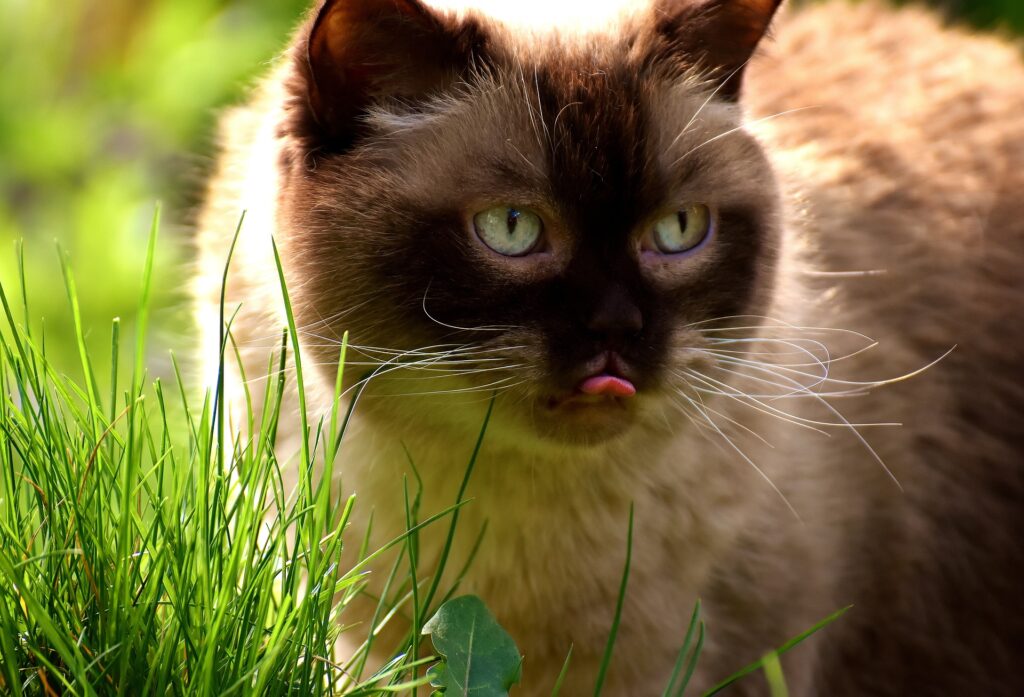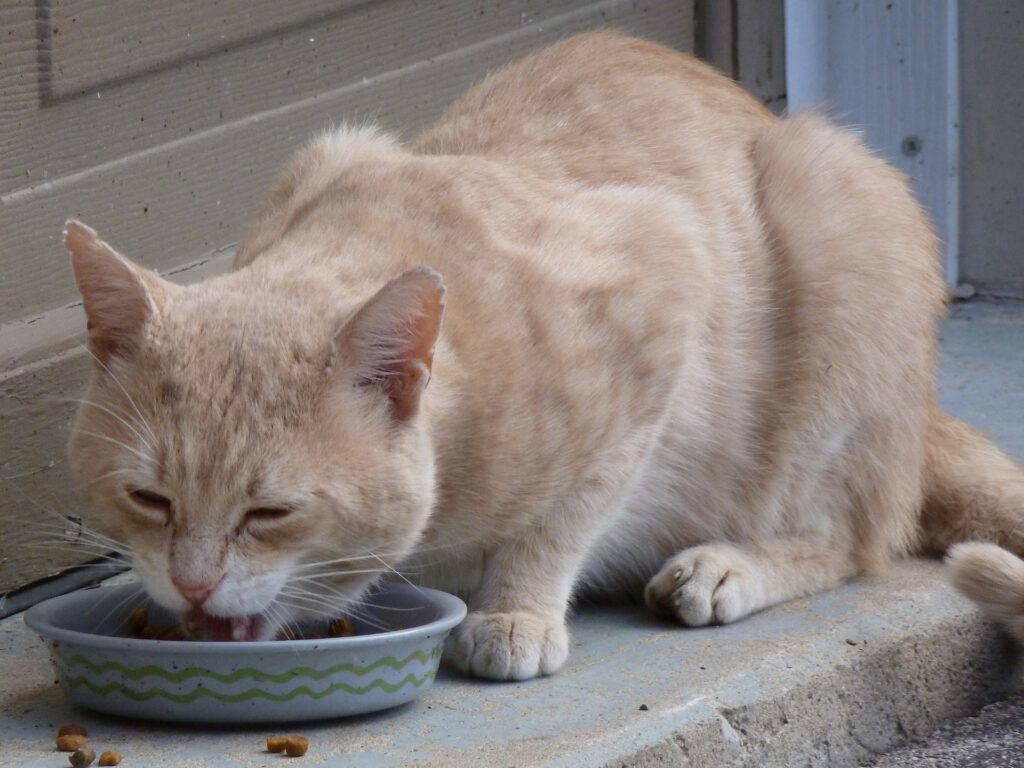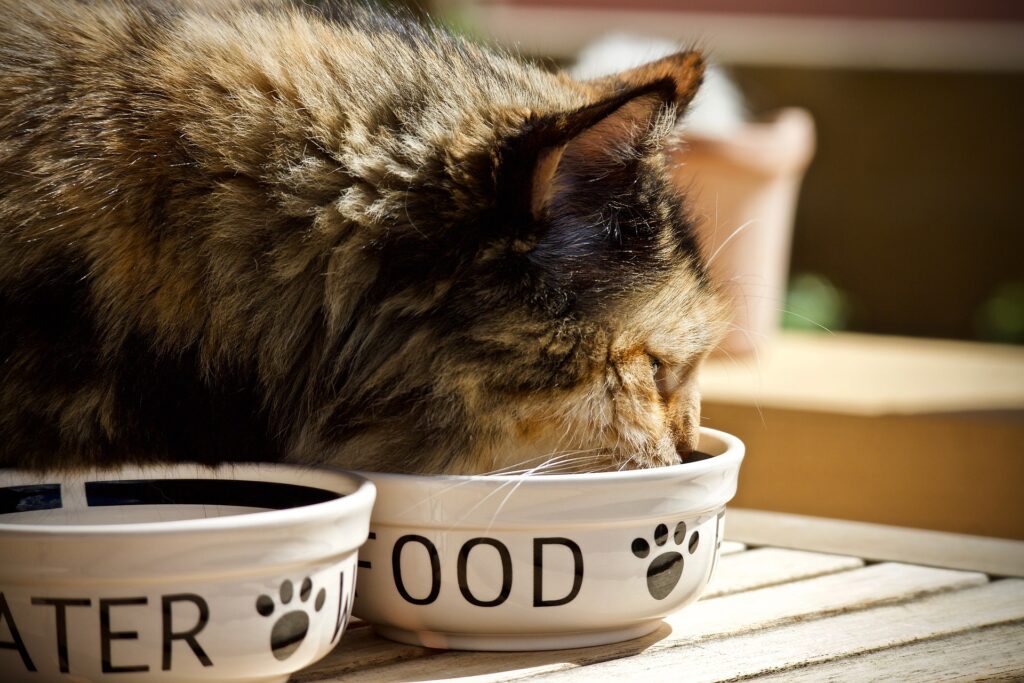This is a collaborative post sharing about the benefits and risks of raw food and if it is safe to give raw food to your cat. There are so many different options available today when it comes to feeding cats. From traditional kibble and canned food to homemade meals and even raw diets, pet owners have a lot to consider. One option that has been gaining traction in recent years is feeding raw food. This is nothing new; cats are obligate carnivores and have a digestive system that can process raw meat. This also means that our feline friends require a diet that is primarily made up of animal protein. Feeding raw food seeks to mimic the diet of wild cats and is often claimed to be a healthier and more natural way to feed cats. However, others are concerned about the risks of food poisoning. In this article, we will explore the benefits and risks of raw feeding for cats and provide tips for safely feeding your feline friend a raw diet.

Benefits of raw feeding for cats
Improved Digestion
Cats fed raw meat as part of their regular diet can benefit their digestive health. This is because raw food is more similar to what cats would eat in the wild. It also contains fewer carbohydrates, additives and preservatives than many commercial cat foods.
Healthier Skin and Coat
Adding a raw diet to a regular meal can also help to improve the health of your cat’s skin and coat, especially if the diet is high in omega-3 and omega-6 fatty acids, such as fish fillets, which are essential for healthy skin and coat.
Stronger Immune System
Giving raw meat to your pet cat can help boost its immune system, as it contains many nutrients, including vitamins, minerals, and antioxidants, which are often lost during the cooking process.
Improved Dental Health
Feeding cats raw food can also help to improve their dental health. Chewing on bones, for instance, can help to scrape away plaque and tartar, lowering the risk of dental problems such as periodontal disease.

Risks of raw feeding for cats
Foodborne illnesses and food poisoning
Raw meat can contain many different bacterial species and pathogens, including Salmonella, E. coli, Listeria monocytogenes, etc., which can lead to serious illness in cats. It can also result in cross-contamination, where pathogens are passed on to humans. This is why proper food handling and hygiene practices are essential when handling raw meats such as beef, pork and chicken.
Dental fractures, gastrointestinal perforations and obstructions
Cats that consume bones as part of their raw diet are also at risk of fracturing their teeth or perforating their gastrointestinal tract, especially kittens and juveniles. Ingesting splintered bones may also lead to gastrointestinal obstruction, which can be life-threatening for your pet feline.
Nutritional imbalances
A strict raw diet should be avoided in all cases because it can result in providing an excessive amount of certain nutrients while depriving your cat of other essential nutrients that he or she requires to stay strong and healthy. This can result in nutritional imbalances, which can lead to a range of health problems over time, including bone deformities and even organ failure.

How to safely feed your cat a raw diet
If you are considering feeding your cat a raw diet, it is important to do so safely to minimise health risks to both you and your pet. Here are some tips to help you get started:
Consult with your vet
Before starting your cat on a raw diet, it is important to consult with your veterinarian. They can help you determine if a raw diet is appropriate for your pet and can provide more guidance and recommendations on how to get started.
Follow proper food handling and hygiene protocols
Proper food handling and hygiene protocols are essential when feeding your cat a raw diet. This can include storing raw meat separately from other foods, using separate utensils and cutting boards, and washing your hands thoroughly after handling raw food.
Gradually introduce your cat to raw food
Introduce your cat to raw food gradually. Start by mixing a small amount of raw meat in with their regular food and gradually increasing the amount over time. But don’t overdo it. If you’re worried about your cat’s health, you can also try giving raw food as treats occasionally.
Feeding your cat raw food can be beneficial for feline pets, but there are also risks that pet owners need to be aware of. If you do decide to feed your cat a raw diet, it is important to do so safely, by avoiding processed meat such as bacon, following proper food handling and hygiene protocols, and consulting with your vet. Also, consider getting cat insurance to ensure that your pet is protected against any unexpected health or medical issues. This way, you can have better peace of mind knowing that your cat’s medical bills will be covered in case of illness or injury, whether at home or away. It will also help you provide the best possible care for your feline friend without having to worry about the financial burden of unexpected veterinary bills. You can find out more here.